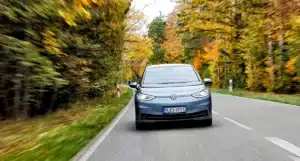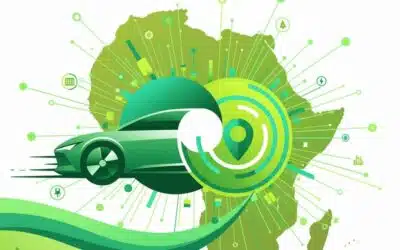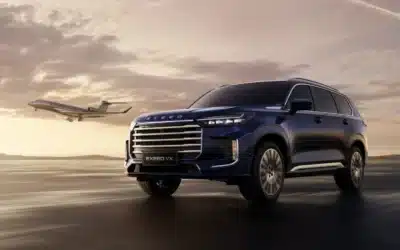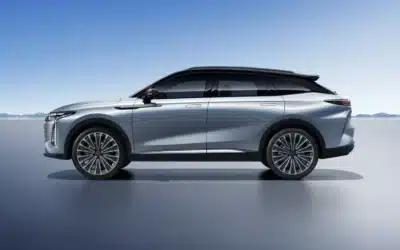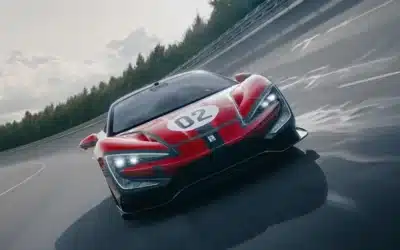Imagine never needing to stop again at a service station to refuel your vehicle. Well, this sci-fi future could be reality quite soon.
Various countries are beginning to explore an innovative concept: roads that charge electric vehicles (EVs) as they drive. These ‘electric highways’ promise to reduce the need for long charging breaks and make electric vehicles a more attractive option for long journeys.
Norway, known for its strong commitment to sustainable transportation, has been leading the way in implementing charging roads. In 2019, the country opened a two-kilometer stretch of electrified road near Oslo that allows electric vehicles to charge while driving. This pilot project, called “ElectriCity,” uses an innovative solution known as “dynamic charging.” Dynamic charging works by installing conductive plates beneath the road’s surface that are connected to an electrical grid.
As an electric vehicle drives over these plates, it receives a continuous supply of electricity through a movable arm located on its underside. This enables the vehicle’s battery to charge while on the move.
The advantages of dynamic charging are numerous. Firstly, it eliminates range anxiety – one of the main concerns for EV owners – as drivers no longer need to worry about finding available charging stations or planning their trips around them. With dynamic charging roads in place, they can simply hit the road and recharge as they drive. Secondly, dynamic charging offers significant time savings compared to traditional stationary chargers. While traditional chargers require drivers to stop for several hours before continuing their journey, dynamic chargers provide continuous replenishment without any interruptions.
One of the most important players in charging roads is Israeli company Electreon which has won the first commercial tender in Norway. The Transportation Authority of Trøndelag County in Trondheim (AtB) has selected Electreon’s wireless Electric Road System (ERS) as the sole tender winner for charging a bus wirelessly. The project deployment will begin in the summer of 2024, as part of an ambitious long-term vision of AtB is to establish an electric road in the city, accessible to all fleets as a shared charging platform for AtB’s buses, e-trucks, and e-taxis.
Sweden is also a pioneer, with the construction of a permanent electric highway set to be completed in 2025. The highway will charge vehicles while in motion, tackling the biggest challenge of large-scale decarbonization, particularly for heavy vehicles. “Trucks require more batteries to travel longer distances with heavier loads. These add up to a great deal of weight, creating a vicious cycle. We want to reduce that burden by charging vehicles on the go,” explains Jan Petersson, director of strategic development at Trafikverket, the Swedish transport authority. Sweden is planning to use an inductive system, which enables vehicles to be charged via electromagnetic coils located in the underbody.
Inductive charging employs magnetic fields to transfer energy wirelessly from the road to the vehicle. A series of coils embedded beneath the surface generate an alternating magnetic field, which induces an electrical current in a receiver coil installed on the underside of the electric vehicle. This wireless energy transfer allows for convenient and efficient charging while driving. Compared to dynamic charging, inductive charging offers even greater convenience as it eliminates the need for physical contact between the vehicle and road infrastructure. This means that EVs equipped with inductive technology can charge simply by driving over designated areas without any additional setup or equipment required.
Italy is also pilot-testing a similar technology. The inductive charging technology demonstrated in Milan powers an electric vehicle from underneath the roadway while the vehicle is still on the move. However, transforming the technology from a one-mile test track into a real-world highway is neither simple nor inexpensive. Stellantis, the Amsterdam-based parent company of Fiat and other auto brands, recently announced a successful run of its “Arena of the Future” project near Milan. The project showed that inductive recharging technology can enable a battery-powered electric vehicle to travel at typical highway speeds without consuming the energy stored in its battery.
Not to be left behind, work is also underway in the USA on a one-mile test road in Detroit, Michigan, aiming to create an electrified roadway system that charges electric buses, shuttles, and vehicles while driving. An academic team at Cornell University is also exploring the possibility of high-frequency inverter technology for wireless charging for EVs.
The integration of smart technologies into charging road infrastructure could provide additional benefits. For instance, incorporating sensors and communication systems could enable real-time monitoring of traffic conditions, energy consumption data collection, and dynamic pricing based on demand or time of day. This data-driven approach would not only optimize the use of electricity but also allow for efficient traffic management by diverting vehicles to less congested routes or providing real-time information about available parking spaces or charging points.
However, despite these promising developments, the reality of a fully overhauled roadway system is complex. The costs of converting existing roads by installing the technology systems, adapting vehicles to accept the technology, and the durability of the system under weather-beaten asphalt are all significant challenges to be addressed.


